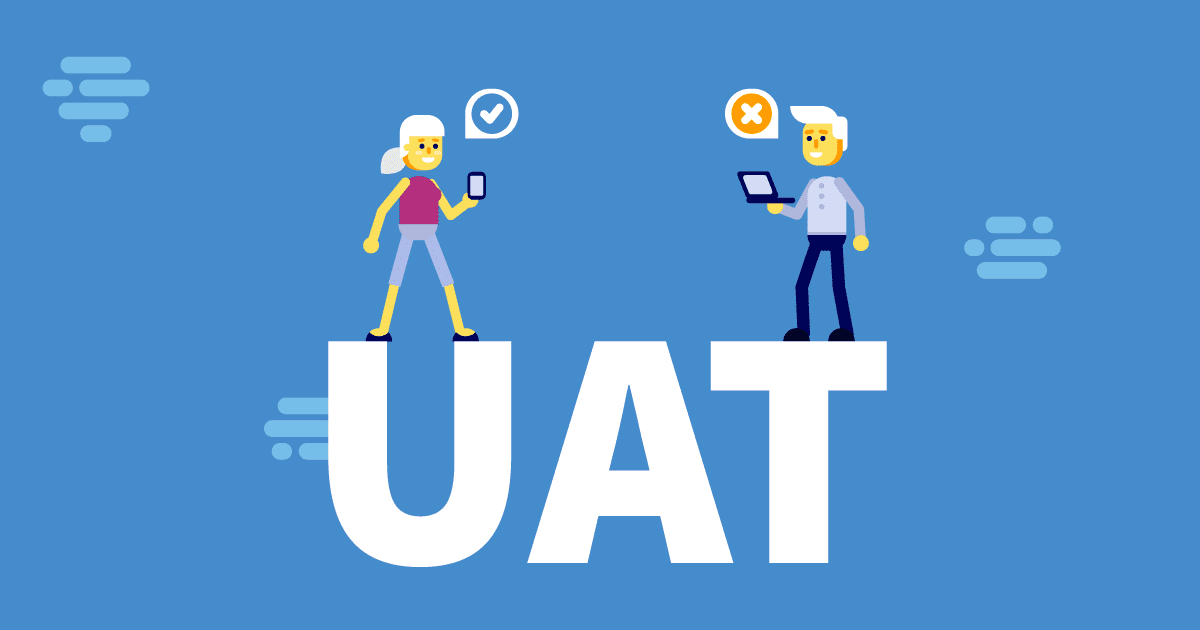Testing assesses the quality and performance of a software before release, and helps in determining the product's behavior. Software testing requires testers to verify that the system meets the requirements and also validates that the system will meet user needs.
During a software development cycle, the software undergoes various types of testing. What is user acceptance Testing? It’s usually referred to as UAT, and is a testing process used to verify that the built product works as intended for its end users.
UAT is distinct from all other types of testing. Instead of bug-finding, its primary focus is on validating how easy and satisfying the product is to use by recreating real-life scenarios. It also assesses the overall look and feel to determine the end-users’ comfort level. UAT helps to track user responses when they interact with the application.
When a developer designs a feature, they will have been guided by their understanding of the requirements. If the design functions as intended, the designer’s interpretation and implementation will be confirmed during UAT. It is not the purpose of UAT’s output to provide solutions, but to reveal any issues missed during the actual development and testing cycle. UAT also gives user feedback to make any final improvements to the product before releasing it to a broader audience.
UAT is an important stage of any software development and is often conducted at the end of the testing cycle. The ultimate user acceptance tester is the real user who will eventually be using the application.
6 Key Considerations for User Acceptance Testing
Like all other testing, for UAT to be a success, it’s essential to predefine a comprehensive plan and strategy. So what is user acceptance testing and how is it performed? Here are some key considerations that can help with planning user acceptance testing.
1. Be clear about the objectives for User Acceptance Testing
UAT takes place towards the end of the STLC, after all the significant feature development has been completed and when the system does not have any blockers. When UAT is planned, the user becomes the main focus, and these questions become a priority:
- Can the users successfully launch the application?
- Are the users able to perform the expected tasks?
- Is the application intuitive?
- Does the application solve the user’s problem?
- Does the user notice any types of error?
2. Determine the Acceptance and Exit Criteria
User acceptance testing is entirely dependent on the acceptance criteria, which will have been defined during project initiation. During UAT, a test is considered a pass if it meets the acceptance criteria. Defining the exit criteria helps in marking the closure of user acceptance testing. It ensures that all details on what is expected are well documented before proceeding with the production release.

3. Building User Acceptance Testing Team
The success of user acceptance tests depends a lot on the people involved in the testing, so it’s important to find the right UAT testers. If necessary, user testers can be hired from crowdsourcing platforms. When selecting a team, try to include people who will be likely to use the application in normal life. Some of the people who are the right fit for UAT include:
- The stakeholders who commissioned the software
- Domain experts
- Business analysts
- End users who are currently using the software
- End users who intend using the software in the future
UAT Testers need to understand the acceptance criteria ahead of testing and be clear about the goals.
4. Setting up UAT Environment
It is also a purpose of UAT to isolate any issues that might occur in production. UAT is at its most effective when conducted in an environment that closely resembles production with a real data set. When using waterfall, a separate UAT environment would be supported but with agile being the current trend, a dedicated UAT environment is not maintained due the iterative nature of agile. Data from production is copied over to the UAT environment, and the team works to ensure that the environment is constantly updated to include the latest code and bug fixes. The idea is to execute UAT on the final build in preparation for production.
5. Planning the Types of UAT Testing
There are different types of acceptance tests, like alpha testing, beta testing, contract acceptance testing, and regulation acceptance testing. When planning, determine the types of tests that are applicable to your product. For software, UAT generally includes alpha and beta testing. Contract testing and regulatory compliance testing are primarily conducted in the aviation and healthcare sector.
6. Defining Communication Workflow
While defining the test plan and strategy, details on the QA process and workflow are documented and shared with the team. Because the user acceptance test team is composed of testers external to the QA team, some restrictions might come up with access to internal tools and documents, and the process might need some tweaking. Setting up a UAT workflow on how to report issues, provide feedback, arrange technical aid, and deciding communication guidelines will help everyone involved in the testing.
Conclusion
What is user acceptance testing? Apart from improving the product, UAT also establishes an expectation upfront on how the final product will work. UAT builds confidence among the team. Looking at the current trend, many startups spend a significant percentage of the QA budget on conducting UAT because it can ultimately provide what customers want. Nowadays, we also see that instead of waiting until a release to perform a user acceptance test, UAT is conducted during the sprint, which reduces the cost of fixing a bug identified at a later stage.